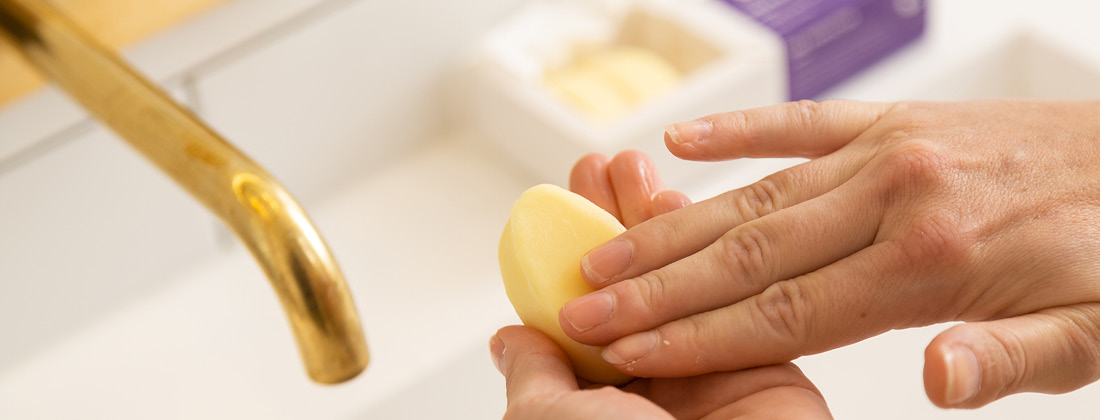
Water – our most precious resource is at risk
By 2025 almost 2 billion people will be living with absolute water scarcity. This means they have less than 500m3 of water per year, per person, available. To put that in perspective, in New Zealand, we have 5400m3 available every year per person (and that excludes water used for hydroelectricity generation). Climate change is making this dramatically worse of course, and by 2030, almost half of the world’s population will be contending with high water stress, which is where available water drops to below 1700m3 per person.
Those are some scary statistics. In New Zealand, the vast majority of our fresh water is used for irrigation of crops for human and animal consumption. It’s clear that we need to be mindful of our water usage and not take for granted what we are lucky enough to have so much of (at the moment).
Water waste in the cosmetics industry
Why do we need to consider water when it comes to cosmetics and personal care? Well, a typical liquid shampoo is made up of around 70% water. A conditioner, 90-95% water. Micellar water can by up to 95% too. The worst is something like bathroom spray… a crazy 98% water!
Doesn’t that seem a bit ridiculous when you use these products in a room where water is quite literally on tap? Not only is that a waste, but by making a product mostly water, you must package that product in something like plastic, which itself is quite a thirsty material. Typically, it takes twice the volume of plastic container in water, to manufacture that bottle. So, one 350ml bottle, requires 700ml of water to make.
And as water is heavy, lots of energy needs to go into transporting products from their manufacturing plant to the end consumer (which are usually thousands of kilometers apart as the vast majority of all cosmetic products are made in the USA and China).
Why do we need water in our products?
So, if there are so many downsides to so much water in our products, why is it in there? Firstly, water is necessary. Water is a solvent, and for a lot of products to work, water needs to be in the formula, or used with the product to make it work.
But let’s be real, no formula ever really needs to be 95% water to work. The biggest reason products are mostly water is cost. Water is cheap (or even free depending on where you are.). It’s so cheap, it’s referred to as ‘profitol’ by many cosmetic chemists I know. By filling a product with water, it is much cheaper to create a product. And as consumers are demanding cheaper and cheaper products, this is an easy way to fill that demand.
Consumers shift to brands that deliver greener beauty, less plastic and lower carbon footprints
The good news is that consumers don’t just want cheap. They now also want brands to be more socially and environmentally aware. Excitingly, there is a big shift in the cosmetic world towards not only natural ingredients, but sustainable packaging, transparent supply chains and most recently, waterless beauty.
What is waterless beauty?
Waterless beauty (or anhydrous beauty) is exactly what it says on the tin – beauty and personal care products that don’t contain water, usually to avoid the above problems. And they work beautifully. Removing the water not only saves resources and does away with wasted packaging, but it also makes these products more concentrated, so they last longer and are more value for money. The most famous example is probably the shampoo bar, which is most definitely having its fifteen minutes of fame.
It all started with a shampoo bar…
When I started Ethique back in 2012, shampoo bars were few and far between, and consumer understanding at an all-time low. Eight years later, shampoo bars are popping up everywhere, with some of the big guys even dipping their toes into this field.
And why wouldn’t you? A real shampoo bar does away with wasted water, plastic packaging and hefty carbon footprints and provides all the benefits that people love about a liquid product, in a bar form. A proper shampoo bar is exactly like what you get in a bottle, just without the water (and the bottle of course). Though do be a little careful when buying your bars, as lots of shampoo bars out there are soap based, which damages hair due to pH fluctuations.
The waterless beauty trend continues to grow… and grow
The waterless beauty category is no longer just shampoo. Solid conditioners are now common, and body and face cleansing bars are gaining more traction too. Less easily found, but just as effective are solid moisturising bars for face and body, mask bars, deodorants, dog products and even some household products. Ethique make all of these, and more, and so far, have saved well over 10 million litres of water (and almost ten million plastic bottles).
Some of these products contain a little water, or we encourage you use them on damp skin. Water is what hydrates skin, not oil, so you do need water present in some form or other. The oil then helps form a barrier to prevent water loss (transepidermal water loss or TEWL).
And waterless beauty exists outside bars too. Serums are typically free from water and made up of oils or silicones. They generally have a higher concentration of active ingredients and are applied under moisturisers. A lot of colour cosmetics don’t contain water as they often rely on silicones to create spreadability. The humble soap bar is an excellent choice for washing your hands and body as they last for ages, lather beautifully and usually come plastic free.
Waterless beauty is a growing trend and it’s about time really. Removing the water means you can remove so much more – like single-use packaging AND it lowers a products carbon footprint! There are many options available if you want to give it a go. I always recommend people start with a solid shampoo bar – they’re the gateway bar to a waterless beauty regime and a plastic-free bathroom.



